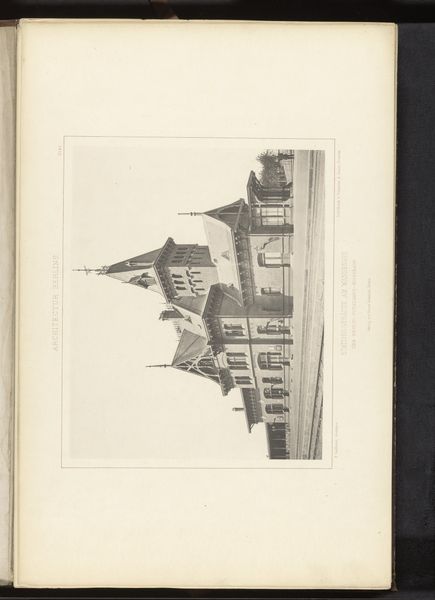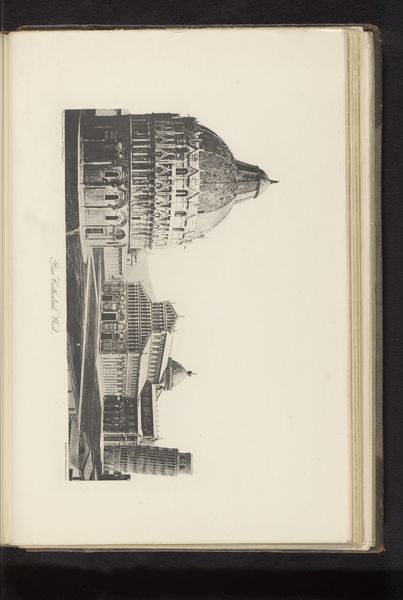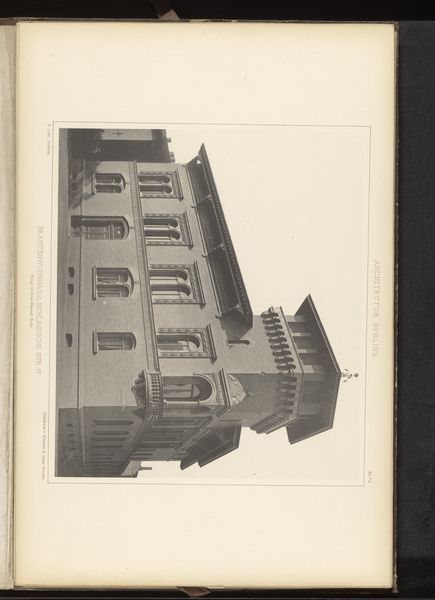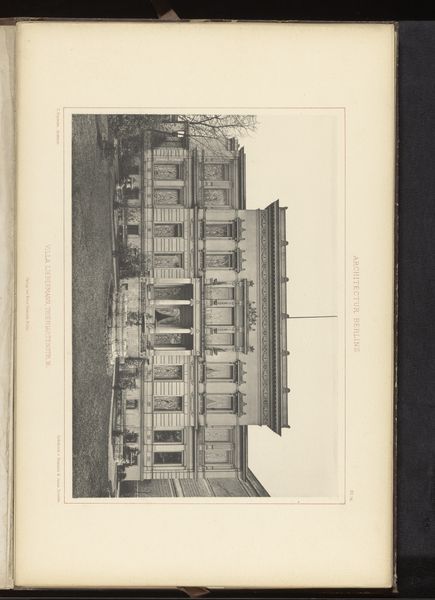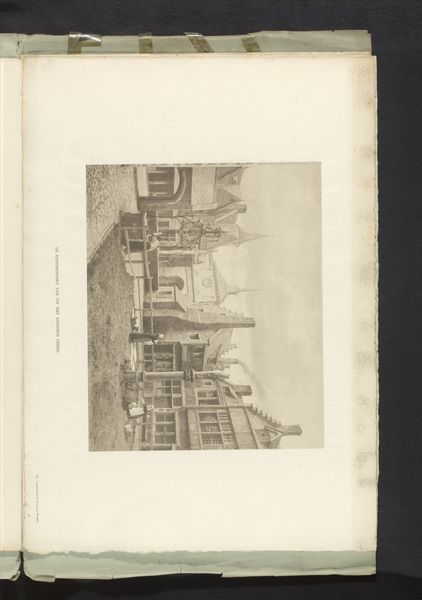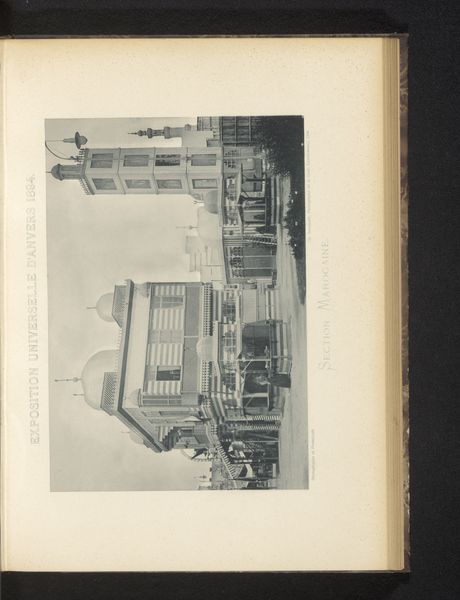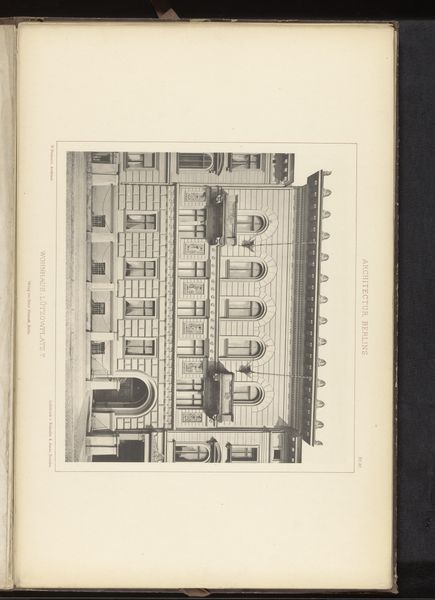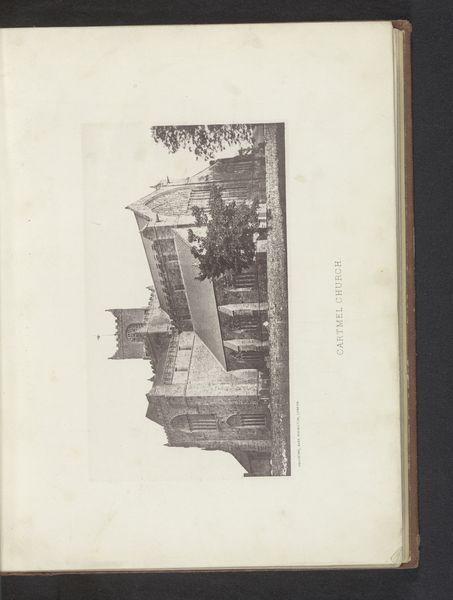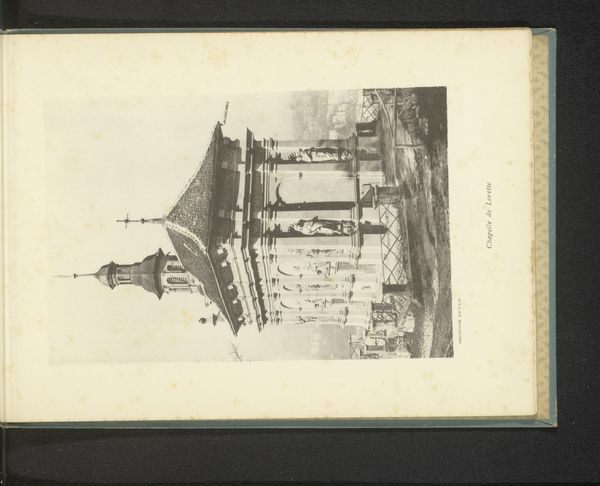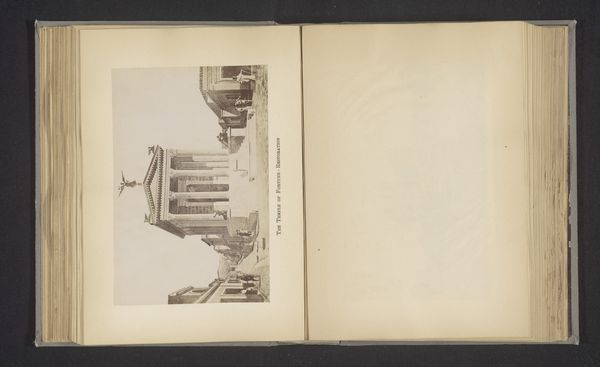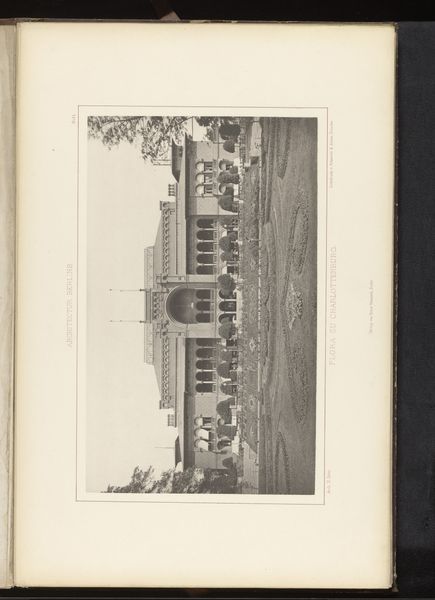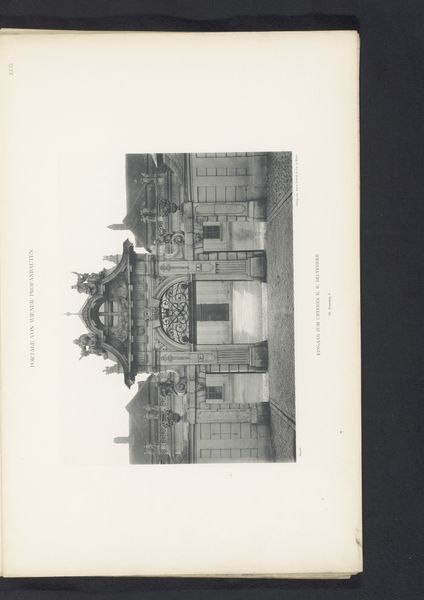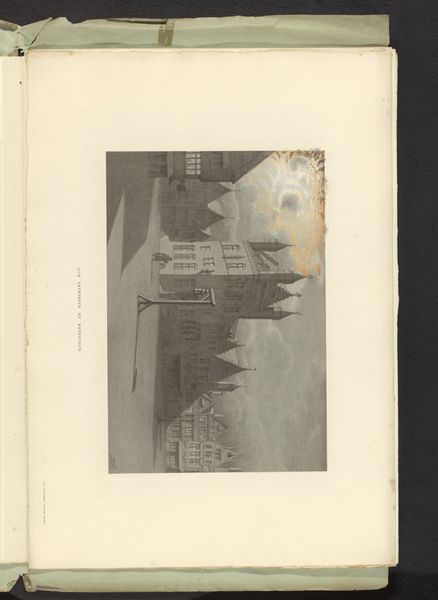
Gezicht op een villa aan de Rauchstrasse 19 in Berlijn, Duitsland before 1877
0:00
0:00
drawing, print, etching, pen, architecture
#
drawing
#
aged paper
# print
#
etching
#
old engraving style
#
sketch book
#
hand drawn type
#
personal sketchbook
#
hand-drawn typeface
#
pen-ink sketch
#
pen work
#
sketchbook drawing
#
pen
#
cityscape
#
sketchbook art
#
architecture
#
realism
Dimensions: height 228 mm, width 291 mm
Copyright: Rijks Museum: Open Domain
Curator: I’m immediately drawn to the level of detail in this work, a certain intricacy despite the limited palette. Editor: Absolutely. We are looking at a drawing, an etching really, titled "Gezicht op een villa aan de Rauchstrasse 19 in Berlijn, Duitsland". It is attributed to an anonymous artist and predates 1877. The materials used are pen and ink, revealing a process rooted in careful observation. Curator: Yes, the pen work gives the building such a concrete feel. Look at the way light and shadow define the facade. How would you consider the act of reproducing architecture through this hand-crafted technique? Editor: Considering this was likely a study or record, it reflects how the architecture itself was perceived – not just as shelter, but as a crafted object. The means of reproducing architectural drawings became incredibly important with industrialisation, reflecting a societal shift. Before the widespread availability of photographic methods, etchings like these served as crucial documentation. Curator: Precisely, the drawing functions not just as a representation but as a social artifact, imbued with the politics of architectural documentation and urban development during that era. The Rauchstrasse itself, as a space of bourgeois residence in Berlin, needs to be understood through its historical connotations within Prussian expansionism. How does the drawing style then, uphold certain class fantasies of property and ownership? Editor: I find the emphasis on realism striking – and the level of meticulous production involved speaks volumes about the values ascribed to architecture. It would have required highly specialized skills. It reflects a material commitment to permanence, wouldn’t you say? These etchings become objects of value and historical record precisely because of their tangibility. Curator: And, as reproductions within a larger architect's book, these images acted as key components in the dissemination of architectural ideas – bolstering, arguably, a Western-centric narrative of modernity across Europe. They circulated ideas of “good” building, of German ingenuity. The very act of circulating those drawings becomes politically charged. Editor: Yes, that element of replication truly ties into how knowledge about architecture and its associated labour are constructed and circulated. A dialogue begins between material culture and socio-political narrative. Curator: Seeing this has underscored the importance of interrogating not just the 'what' but the 'how' and 'why' of these replications of an idea about property. Editor: Indeed. This drawing, or print, becomes a site of material inquiry for understanding shifts in architectural production and its relation to social forces.
Comments
No comments
Be the first to comment and join the conversation on the ultimate creative platform.
